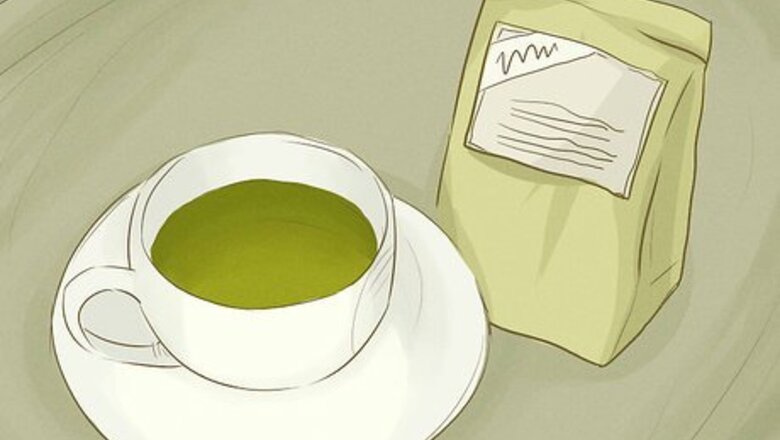
views
Preparing Tea Supplies
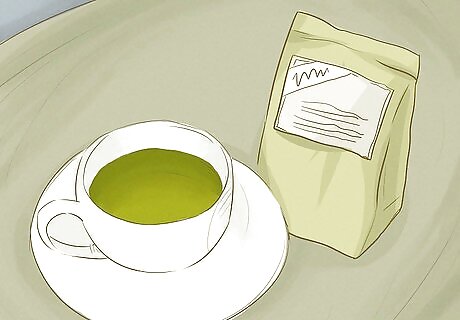
Select your preferred tea. There's no limit to the types of tea you can buy. Choose from hundreds of types of green, black, white, red, and herbal teas, each with a different flavor profile. You can buy loose tea or purchase it prepackaged in bags. Choose the freshest tea you can find for best flavor and health benefits. Choose tea with the properties you're looking for. Note that green tea is known for its long-term health benefits, black tea provides a small jolt of caffeine, and herbal teas may be used to remedy everything from sleeplessness to poor digestion.
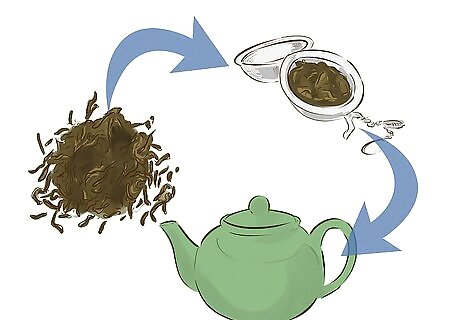
Decide how to filter your tea. If your tea is pre-bagged, your filtration system is already set. If you have loose tea, however, you'll need a way to remove it from the water after steeping. You can buy your own empty teabags and fill them with tea for one-time use. Tea balls are another popular choice. These are better to use for black tea than other types of tea that tend to expand more during the brewing process. In order to brew a great cup of tea, the water needs to be able to flow freely through the leaves. Basket filters are a good choice for any type of tea. You can pour water directly over loose tea and filter it out after it steeps using a fine-mesh strainer.

Prepare your tea accessories. What type of tea equipment do you have? You can make a whole pot of tea using a teapot, or do a cup at a time using a teacup and strainer, tea ball or tea bag. Use the method that's most convenient for your needs. The tea and water are the two most important components of a good cup of tea; the equipment is secondary. That said, having a nice tea kettle and pretty cups can add to the calming effect of drinking and enjoying tea. Drinking tea has been an important ritual in many cultures for thousands of years. You can keep this tradition alive by creating your own tea-drinking ritual, whether it's brewing a cup at a time in your favorite mug, or using a pretty ceramic teapot with cups and saucers. The material of the accessories are important as well. Heavy metals are better for teas that need to be prepared at high temperatures due to their ability to retain heat, while less conductive materials are recommended for teas with a colder preparation. Use glass for white, green, and herbal tea; porcelain for white, black, and herbal tea; and yixing for oolong and pu-erh.
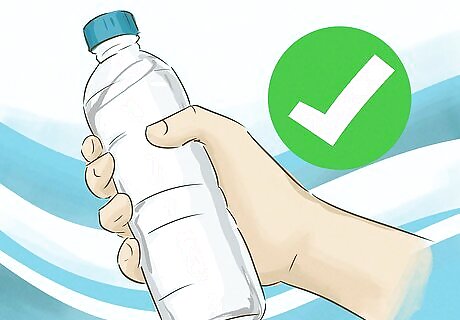
Use purified water if possible. Since tap water contains fluoride and other chemicals, using it to brew tea can negatively impact the flavor. While tap water is always fine in a pinch, if you want the best possible flavor and health benefits, use spring water or another type of filtered, pure water.
Making the Perfect Cup or Pot

Measure out your tea. If your tea comes in bags, you're all set. For loose tea, you'll need approximately 1 teaspoon per 6 ounce serving of water. Use a teaspoon to measure out the correct amount into your tea bag, tea ball or basket filter. Place it inside the cup, mug or teapot you're using. Note that a 6-ounce serving is standard teacup size. If you're making enough tea for a large mug, you might want to use a little more. If you're making a heavier, denser tea, such as many types of black tea, you can use a little less than a teaspoon per serving. For lighter, bulkier teas, like green teas and herbal teas, use a little more than a teaspoon. After the first few cups you make, you can start measuring out your tea to taste.
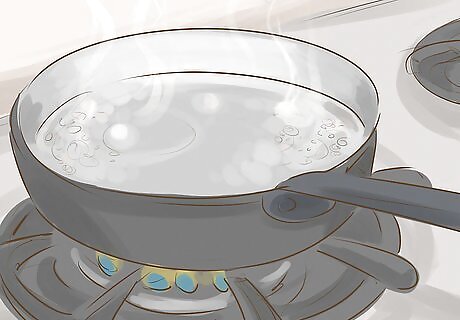
Heat your water to boiling. Measure out a bit more than you need for the tea based on your preferred serving size and boil it. No matter what kind of tea you're brewing, you'll need to bring the water to a full, rolling boil as a first step. You can do this quickly using a tea kettle, but it works just as well to fill a small saucepan with water and heat it up on the stove over high heat. You can also use a microwave to heat your water in a microwave-safe dish.
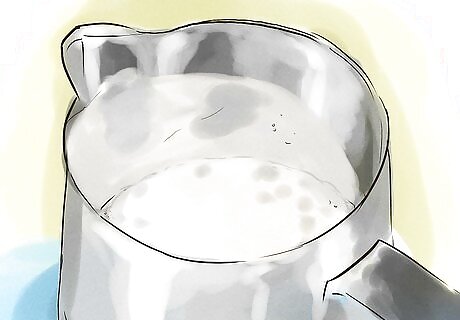
Preheat the teapot. Pour some of the boiling water into the empty teapot and swish it around. Let the entire pot get warm to touch. Discard this water and immediately place the correct amount of tea in pot. Immediately placing the tea into the pot can cause the pot to crack, and preheating it prevents this.

Pour the water over the tea. If you're making black tea, go ahead and pour the boiling water directly over the tea to begin the steeping process. For green, white or herbal tea, take it off the heat and wait 30 seconds until the boil stops, then pour it over the tea. This prevents the delicate leaves from overcooking, which would result in a bitter taste. If you want to make it an exact science, use a thermometer to take the water's temperature so you can control the flavor of the tea. Black tea is best steeped at a temperature of 203 degrees Fahrenheit (95 degrees Celsius). Green tea is best steeped at a temperature of 160 degrees Fahrenheit (74 to 85 degrees Celsius) before you pour it over the tea. White tea should be steeped at a temperature of 185 degrees Fahrenheit (85 degrees Celsius). Oolong tea is best steeped using a temperature of 203 degrees Fahrenheit (95 degrees Celsius). Herbal teas should be steeped using a temperature of 203 degrees Fahrenheit (95 degrees Celsius).
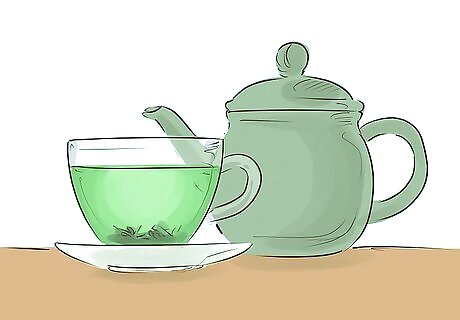
Steep the tea. The amount of time you'll steep the tea depends on both the type of tea you're making and your individual taste. Experiment to find the steeping time that is best for your cup of tea. Black tea should be steeped for 3 to 5 minutes. Green tea should be steeped for 2 to 3 minutes. White tea should be steeped for 2 to 3 minutes. Oolong tea should be steeped for 2 to 3 minutes. Herbal teas should be steeped for 4 to 6 minutes.
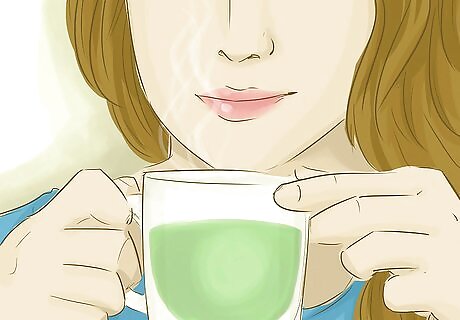
Remove the tea leaves and enjoy your tea. After the steeping time is up, remove the tea leaves. Your tea should be cool enough to drink. Enjoy it plain or with honey, milk or sugar.
Trying Variations

Make iced tea. Iced tea is made by making very concentrated tea, then adding water and ice to chill it. To make it, you'll need to double the amount of tea leaves per serving. Iced tea is a wonderful refreshment on a hot day, and can be made with any type of tea. Herbal teas and fruit teas taste particularly delicious iced.
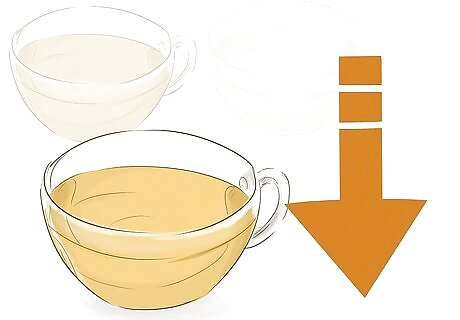
Make sun tea. This is a fun way to make tea using the natural heat from the sun's rays. You set out a container of water and tea in the bright sun for several hours, allowing it to slowly steep. Once the tea is strong enough, you can remove the tea bags and ice the tea.
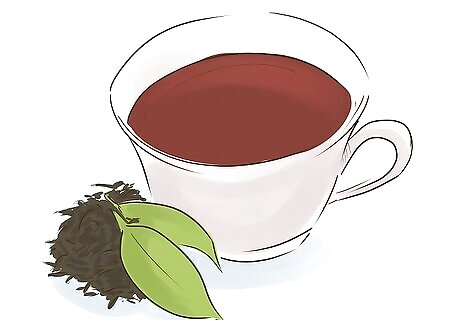
Make Southern sweet tea. You'll find this variation in every Southern restaurant. Black tea is brewed strong, then sweetened with plenty of honey and lemon and poured over ice.
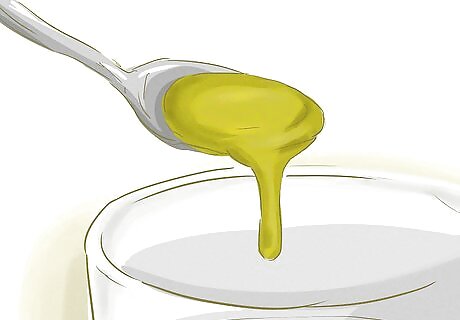
Make a tea hot toddy. If you have a sore throat, combining the healing powers of tea with the warming effect of whiskey can help soothe the inflammation. Brew a perfectly steeped cup of your favorite tea, then add a shot of whiskey. Sweeten it with honey and sip slowly.










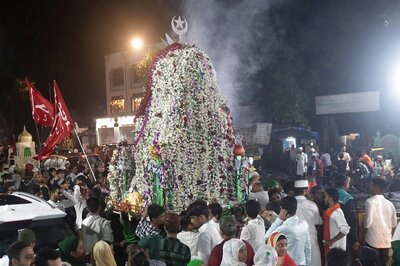





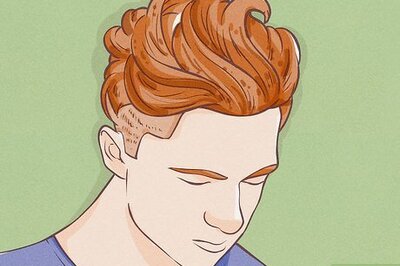


Comments
0 comment